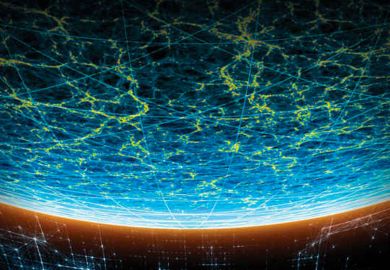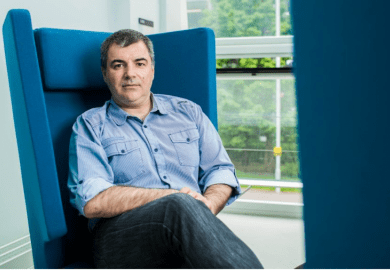Space, in the immortal words of Douglas Adams, “is big. You just won’t believe how vastly, hugely, mind-bogglingly big it is.” For a glimpse of the immense vastness of space, even in our local neighbourhood, Finding Our Place in the Universe is a great place to start.
Hélène Courtois’ book is part scientific discovery, part memoir. It describes how the author and her team spent years mapping our local region in space. You’ll be familiar with our immediate location: a rocky planet orbiting a really rather boring star, one of hundreds of billions of stars in just our galaxy of the Milky Way. You may be less aware that our galaxy is one of many that form a self-contained structure that has been dubbed “Laniakea”, which translates as “immense heaven” in Hawaiian. This supercluster of galaxies is moving under the influence of the rather romantically named Great Attractor (it is almost impossible to say that aloud without a Wizard of Oz voice). And our supercluster, with its thread-like tendrils of galaxies spanning a three-dimensional blob in space, is just one of many that make up the universe. Billions of billions of stars, orbited by planets like and unlike ours, and that’s in our local neighbourhood. Boggled yet?
This identification of Laniakea is a tour de force, and Courtois’ account gives it life. She describes the mapping of first hundreds and then thousands of distinct galaxies, and the measurement of their speed and direction of motion. She points out that this is far from trivial: the objects are by definition far away; they have to be in a certain part of the sky so they can be observed without interference from the Milky Way; and they have to be oriented side-on with respect to the viewer for velocity to be measured accurately. Collect enough of these data, at far enough distances, then visualise the whole via clever software, and Laniakea springs to life. Add in simulation, and the evolution of the local universe can be rewound, restarted and fast-forwarded at whim.
The book also describes Courtois’ career. I have always envied the peripatetic lifestyle of the astronomer, and she recounts visiting remote locations in Hawaii, Chile and outback Australia. With the advent of modern data-transfer methods, being physically present on the ground for observations is no longer necessary, which seems a bit of a pity. The book successfully conveys that the discovery of Laniakea was a personal journey involving changes in direction and grasping of new opportunities, but also that science is a community enterprise in which collaborative international teams bring complementary expertise.
It is difficult to describe and portray a three-dimensional phenomenon using two-dimensional representations in a book, and I recommend viewing the videos mentioned in the bibliography. Moreover, the author sometimes seems so eager and excited to convey technical details that the overall message gets a little lost. Nonetheless, Laniakea is brought to life and with it, for me at least, came this conclusion: we are utterly inconsequential, come and gone in less than the blink of a cosmic eye. I haven’t yet worked out whether this is distressing or a comfort.
Cait MacPhee is professor of biological physics at the University of Edinburgh.
Finding Our Place in the Universe: How We Discovered Laniakea – the Milky Way’s Home
By Hélène Courtois; translated by Nikki Kopelman
MIT Press, 184pp, £20.00
ISBN 9780262039956
Published 21 May 2019
POSTSCRIPT:
Print headline: Just a mote in heaven’s eye
Register to continue
Why register?
- Registration is free and only takes a moment
- Once registered, you can read 3 articles a month
- Sign up for our newsletter
Subscribe
Or subscribe for unlimited access to:
- Unlimited access to news, views, insights & reviews
- Digital editions
- Digital access to THE’s university and college rankings analysis
Already registered or a current subscriber?







